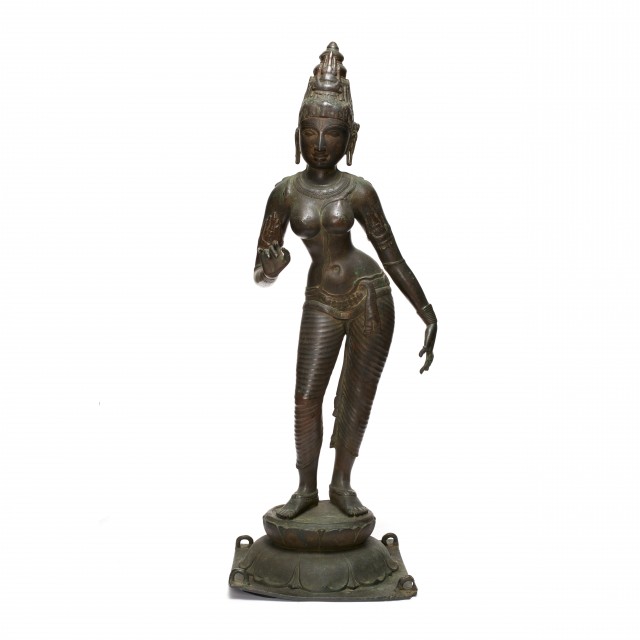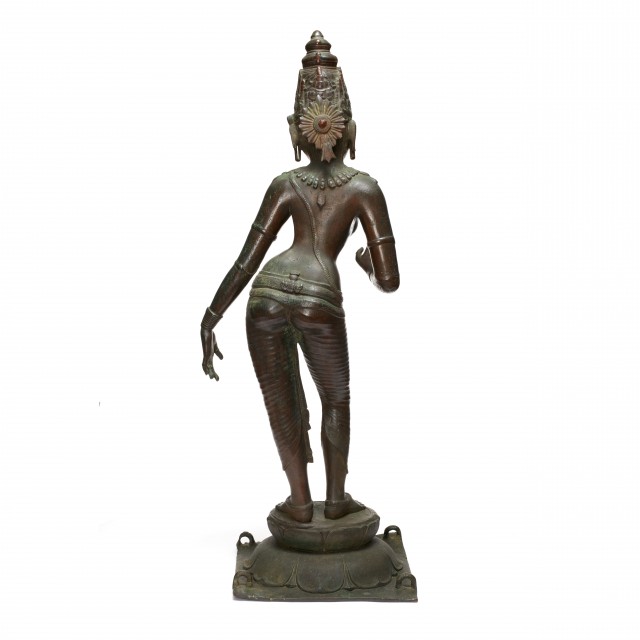Parvati

Photography by Synthescape, Digital image © Asia Society

Photography by Synthescape, Digital image © Asia Society
Parvati
Early 11th century
India, Tamil Nadu
Copper alloy
H. 35 x W. 10 3/4 x D. 10 3/4 in. (H. 88.9 cm)
Asia Society, New York: Mr. and Mrs. John D. Rockefeller 3rd Collection, 1979.19
Provenance
John D. Rockefeller 3rd, New York, NY; acquired from J.J. Klejman, New York, NY, April 2, 1964.
The Asia Society, New York, NY, bequest of John D. Rockefeller 3rd, New York, NY, 1979.
Licensing inquiries
The Hindu goddess Parvati, the daughter of the Himalayan Mountains, is worshiped both as Shiva's wife and as an independent deity. She stands in a traditional posture of self-assured grace, the triple-bend pose (tribhanga) in which the head and lower body slant in one direction, while the torso moves in the opposite direction. The distinctive gesture of her right hand represents holding a flower while her left arm and hand perform a dance gesture. A statue of Parvati is an integral part of the imagery of Shiva as Lord of the Dance. In a South Indian temple, this large bronze would have been placed near an image of Shiva, similar to those in the Asia Society Collection. (See hard copy for further details)


